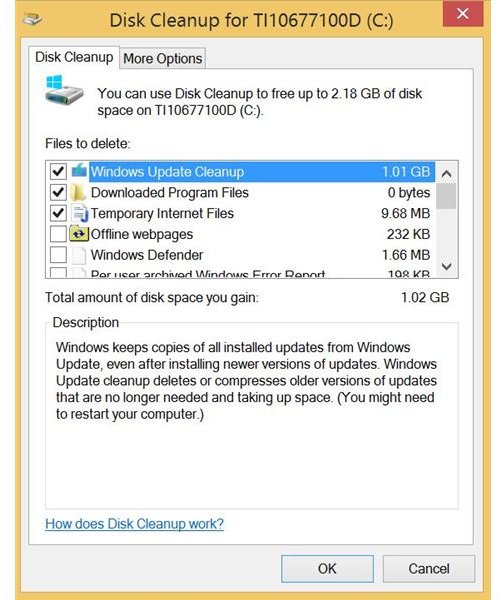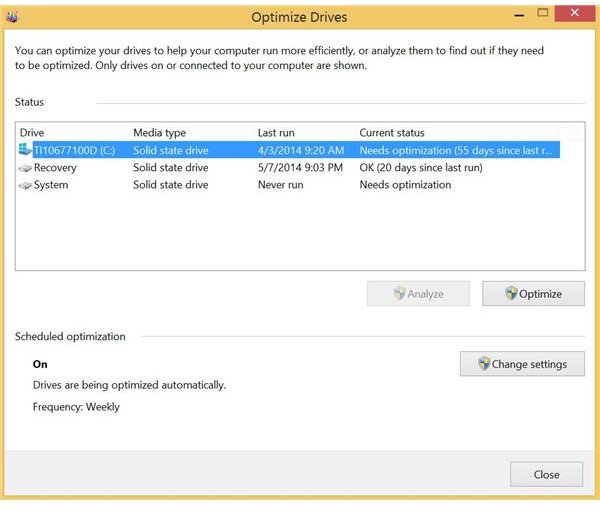Maintaining and Managing Your Windows 8 System
Defragmenting
With older IDE and SATA drives, data was placed on a platter – which looks an awful lot just like a silver record – only smaller. A mechanical arm would sweep across the platter at speeds of 7200 revolutions per minute (sometimes slower, sometimes faster). As you wrote data to the disk, the arm would place magnetic bits on the disk. In order to read those bits, the arm again would need to move into place. As more programs and data were stored and deleted from the disk, data became fragmented causing the arm to have to move all over the disk to read a single file. This would result in performance issues.
With new flash based hard drives (solid state or SSDs), there are no mechanical moving parts to cause performance issues. If you have a new Windows 8 computer with SSD, you do not need to defragment your files. The placement of the data doesn’t matter and won’t cause performance issues. It won’t cause issues to defrag so leaving the Windows 8 default of being optimized automatically is fine (Figure 1).
Verdict: Don’t manually defrag Windows 8 (if you have a SSD)!
Memory Management
In previous versions of Windows, you really needed to pay attention to how memory was being used. When you were done with applications, you had to close them before opening up too many more new apps. Special utilities were available to help you manage your memory and to “reclaim” unused memory. These never worked all that well, but they could give you some assurance that you were doing your best to manage memory.
You can still view memory usage in the Task Manager (Figure 2), but Windows 8 manages memory in a fundamentally different way. By default, when memory is available, Metro style apps (whether suspended or not) will still consume the same amount of memory as they did while running. However, when memory starts creeping up and performance looks like it will be impacted, Windows 8 will actually write the contents of the memory for suspended applications to the hard drive paging file. This drastically reduces the amount of memory used and with fast SSD drives, it’s generally not noticeable when moving back from the disk based page file to live memory. For a detailed overview of this process, take a look at Microsoft program manager Bill Karagounis’ write up on MSDN (you’ll find a link in the References section).
Verdict: Let Windows manage the Metro apps, you manage Desktop apps.
Disk Cleanup
In previous versions of Windows, Microsoft offered a simplistic “disk cleanup” tool that would allow you to easily clean up temporary files, deleted items, downloaded programs and temporary internet files.
Windows 8 doesn’t do much to change this. If you’re running Windows 8 on a SSD you may have noticed you don’t have as much space available to you as with older drives using SATA. SSD prices continue to fall, but are still relatively small compared to their big siblings.
To perform disk cleanup in Windows 8, open the Charms bar and search for “disk clean.” Open the Free up Disk Space by Deleting Unnecessary Files link. This will open the familiar disk cleanup wizard. Select the items you wish to clean up and click OK.
You can also clean up unneeded system files by clicking on the Clean up System Files button. This will give additional options for cleanup (Figure 3), including cleaning up unneeded Windows update files.
Images

Verdict: If you’re running low on space, use the Cleanup tool. It will give you an easy to read list of options that you can safely remove if needed.
These are just some of the basic maintenance options for keeping your Windows 8 system healthy. With Windows 8, Microsoft has made it easier for to you spend more time doing what you want to do rather than worrying about exciting maintenance tasks like defragging and managing memory!
